- NYSD: The tortoise and the hare at Skelton Castle - August 28, 2025
- Green Moor lift Billy Oates Memorial Cup at Hill Top Lane - August 13, 2025
- One weekend, short games: Kirkheaton & Upper Haugh excel - July 29, 2025
One weekend, two short games.
Cricket’s unpredictable nature ranks highly amongst the sport’s many appeals, but it is very frustrating for the spectator when what looks, on paper, like being a tight contest turns out, on grass, to be nothing of the sort.
So it was, on the last weekend of July, when a Saturday visit to Kirkheaton Cricket Club’s Bankfield preceded a Sunday trip to South Elmsall for a look at Frickley Colliery Cricket Club’s Westfield Lane.
In a second-versus-third clash between promotion rivals in the Huddersfield Premier League’s third tier Conference, Kirkheaton trounced Denby Dale by nine wickets.
Then, with the Division Two leaders hosting their Division One equivalent, Frickley Colliery were on the wrong end of an eight-wicket defeat, by Upper Haugh, in a semi-final of the Yorkshire Cricket Southern Premier League’s Mick Savage Trophy.

With the skies overcast approaching the scheduled start time of each game, I daresay winning the toss was key. No surprise, really, that both Kirkheaton and Upper Haugh elected to bowl. Then skittled the opposition.
Both days, I found myself back on the road, heading home, much sooner than I had anticipated. At least, despite the cloud and a forecast suggesting showers were possible, it stayed dry at each ground. Let’s be grateful for small mercies.
Plenty to enjoy, mind, at Bankfield, an elevated ground – from almost 400 feet, boasting fabulous scenic views – on which Kirkheaton have played since 1883.
In 1883, Bankfield was known as Fletchers Croft. Prior to their move to Bankfield, Kirkheaton had played at two other grounds, Kirkheaton Moor and Hole Bottom.
There is debate about Kirkheaton’s formation year (1871 a contender, according to Kirkheaton History Group) but the club seem content with 1880, which appears, along with a sturdy bulldog, on their official badge.
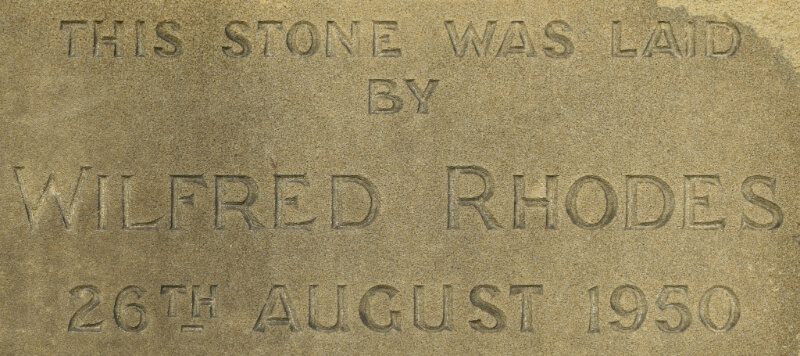
One cannot mention ‘Kirkheaton’ and ‘cricket’ in the same sentence without reference to George Hirst (1871-1954) and Wilfred Rhodes (1877-1973).
Both were born in Yetton, to use the village’s local nickname, and both went on to play, with considerable distinction, for Yorkshire and England. Hirst played in 24 Tests between 1897 and 1909, Rhodes in 58, spanning 1899 and 1930.
In August 1950, the two cricketers unveiled foundation stones on the outside wall of Bankfield’s then-new clubhouse, which surveys the action from the ground’s north end. Although weather-worn, the inscribed stones are there, to be admired, to this day.
The Yorkshire Evening News reported: “The new pavilion will be a fitting memorial to two men who brought real fame to their native village, their county and their country – perhaps the two greatest of all Yorkshire’s great cricketers.

“If Kirkheaton never gives cricket another thing, they will be honoured for giving us the immortal Hirst and Rhodes. That the Hirst and Rhodes spirit [bulldog spirit?!] remains is an acknowledged fact.”
According to the contemporary report of the Huddersfield Daily Examiner: “The club is rich in tradition. May it continue to thrive, to produce players of ability, and may the pavilion be the means of welding together the members.
“May the foundation stones laid by Hirst and Rhodes be the inspiration of those of the future, and may they be shown with pride to new generations of cricket-loving villagers.”
The popular area, dotted with picnic tables, immediately in front of the clubhouse, is known as the Yetton Terrace – or the largest beer garden in Kirkheaton.
Coupled with its narrow, straight approach track, Kirkheaton’s circular pitch, from the air, looks like the business end of a magnifying glass.
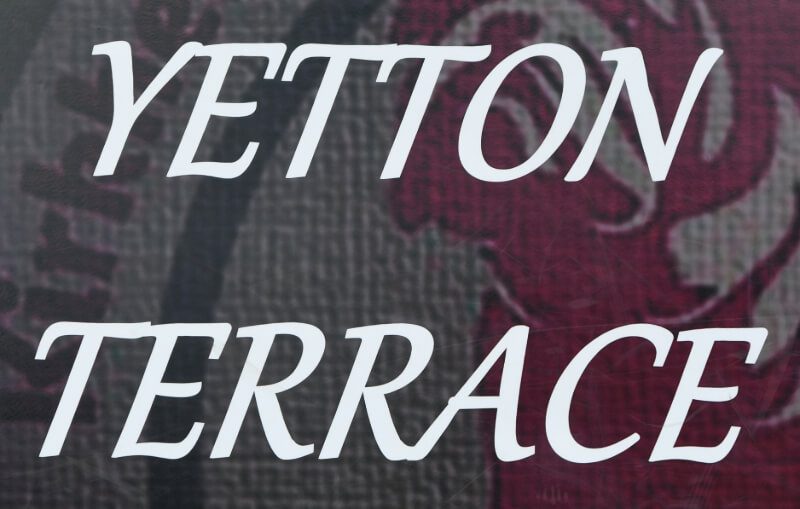
Level ground is not easy to come by amid Kirklees’s challenging topography. True to form, the Kirkheaton pitch slopes, gently downhill, from north to south. Whitewashed gritstone walls, at either end, are a pleasing touch.
On the west side, beneath a Jack-and-the-beanstalk-esque telecoms tower, is a thing of beauty: a traditional and clearly quite old players pavilion, complete with central gable and an eyrie for the scorers.
The view east, mostly of Kirkheaton’s housing, backed by a low hill, is reasonably mundane but those south and (in particular) west are absolutely eye-popping.
To the south, on the near flank of the upper Dearne Valley, rears the giant, tapering Emley Moor telecoms mast.
Look west, across a meadow dotted with grazing sheep, and the land plunges away before rising to Almondbury and Castle Hill, the latter topped by the Victoria Tower.
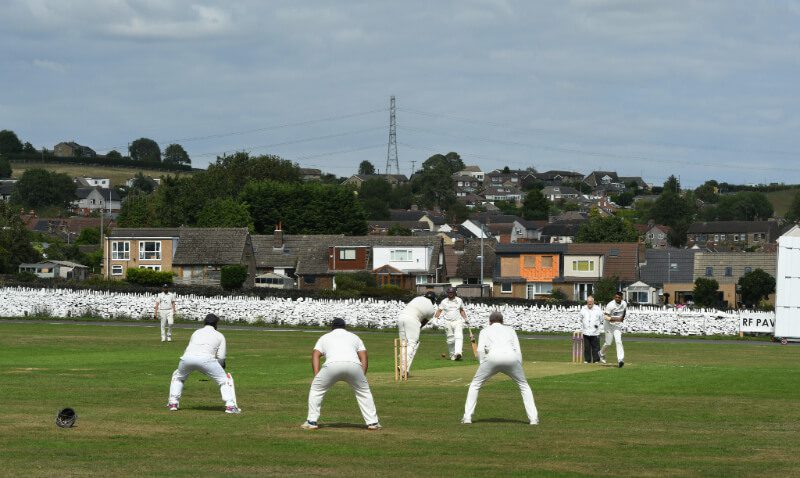
Further to the right, beyond the similarly elevated ground of Moldgreen Amateur Rugby League Club, you can see the Dark Peak moors, above Meltham, and across towards the Ainley Top watershed. Wow factor, in spades!
Liberal splashes of the Kirkheaton’s club colour, maroon, tie together rather nicely the ground’s disparate elements.
Internally, the clubhouse, tastefully modernised, has a large bar and a separate, smaller space for use by members and guests of a bowling club, whose smart green, concealed by tall hedges, is adjacent.
The bowling green, built at a cost of £250, opened in 1903. Officially, the two clubs operate under the ‘Kirkheaton Cricket and Bowling Club’ banner.
It is worth seeking out the historical cricket photographs displayed in the clubhouse. They include a shot of Kirkheaton’s 1889 team and one of the players who, in 1926, lifted the Huddersfield [Premier] League’s prestigious Sykes Cup.
And, so, to the blink-and-you-could-have-missed-it Kirkheaton-Denby Dale encounter.
With the Conference’s leaders, Hoylandswaine Seconds, ineligible for either of the two promotion slots, the teams placed second and third had everything to play for.
Put in, Denby Dale’s batters never looked comfortable. They struggled to settle. Losing Atif Kamran (0) to the afternoon’s third ball set the tone for their innings.
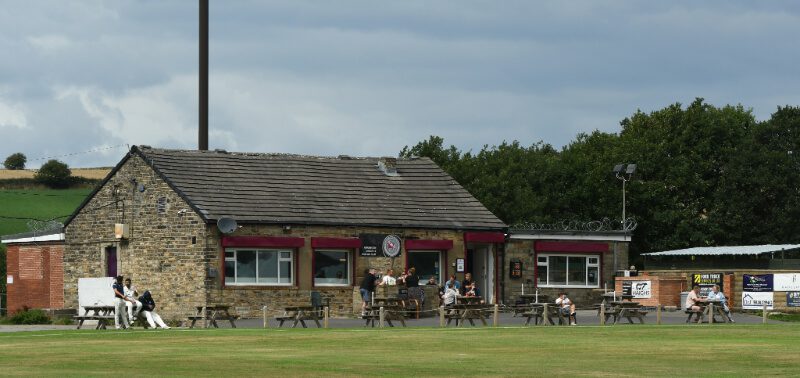
By drinks, taken at 25 overs, the mid-point, the visitors had laboured to 51-5. From 59-9, Denby Dale probably did well, from 35.3 overs, to reach an all out total of 81. No 4 Bilal Asghar (14 off 35 balls) was the leading run-maker.
Tommy Atkinson (4-18 from 10.3 overs), whose probing seamers opened the bowling, and South African overseas professional Bernard Snyman (3-24 from 12) contributed the bulk of the wickets. Wicketkeeper Joe Atkinson pouched three catches.
Captain Shafwatt Shehzad got stuck into Kirkheaton’s reply as if it were a T20. He belted a six and five fours before a miscue saw him caught for 31 (off 25).
Fellow opener Phil Senior (26 not out off 36) and No 3 Tom Gledhill (15 not out off 22) then steered the hosts to 82-1 in just 13.4 overs.
After 14 rounds, Kirkheaton (70 points) stay second, well behind Hoylandswaine Seconds (80), with Denby Dale (58) dropping to fourth. Lascelles Hall (62) are now third. Holmfirth, fifth, have 57 points. Kirkheaton go to Hoylandswaine on August 30 (12.30).
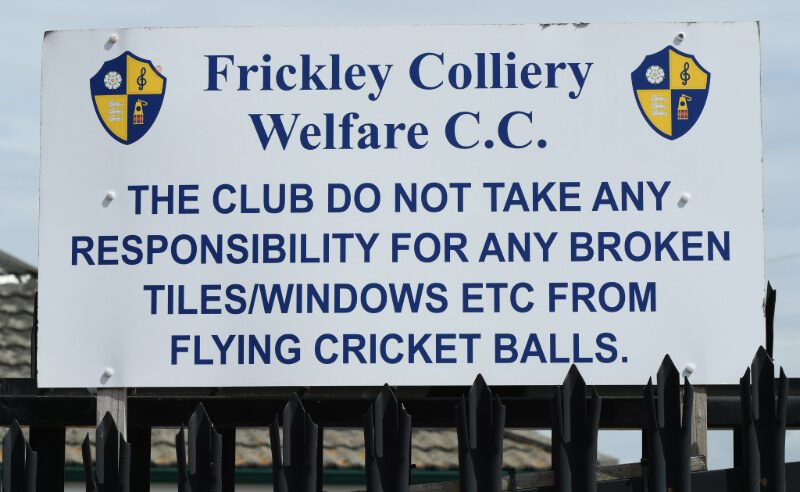
Down the A1, at South Elmsall, the next day, towards the end of Frickley Colliery’s impending comprehensive defeat by Upper Haugh, I overheard one home supporter tell another: “This has been a right humbling.”
You don’t need to watch much recreational cricket to realise, in most leagues, there is a sizeable gap in playing standards to bridge between each tier. Certainly, First Division Upper Haugh were way too strong for Second Division Frickley.
As with Denby Dale, Frickley had trouble getting runs on the board. At the halfway point (20 overs) of their innings, the hosts were 60-7. Dismissal, for 90, came after 28.2.
Opener Tom Hemingway (23 off 38) stayed around longest as Upper Haugh spinners Shawn Hopkins (3-5 from 2.2) and Parvez Asghar (2-18 from four) wreaked havoc.
I was impressed with Upper Haugh’s bowling and fielding. The fumbling of one relatively straightforward catching opportunity aside, the visitors were ‘on it’ all innings.
Telling that two of their other five bowlers chipped in with wickets: Habil Arshad (2-24 from eight) and Sam Thompson (2-25 from eight).
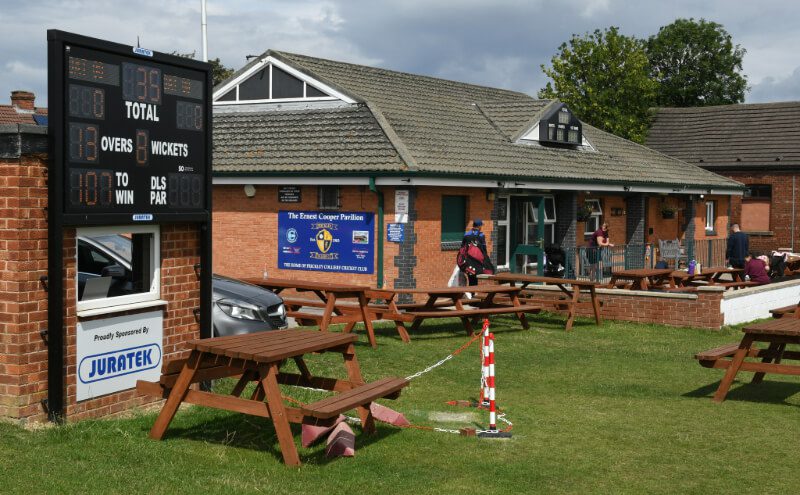
Upper Haugh replied, in less than an hour, with 94-2 off 12.1 overs. Jawad Saleem (31 not out off 28, one six, five fours) and Arshad (30 off 26, six fours), attacking from the off, figured in a first wicket stand worth 51. It broke what remained of Frickley’s resistance.
In the final, at Darfield Cricket Club (the late Mick Savage’s former club), on August 17 (12.30), Upper Haugh will play Dronfield-based Division One rivals Coal Aston, who in their semi-final won by six wickets at Conisbrough, also of the league’s third tier.
I do like cricket grounds with a sense of place. Rising to the east of Westfield Lane, beyond the sadly timeworn facilities of Frickley Athletic Football Club, is a range of reclaimed spoil heaps.
Legacy of South Elmsall’s decades as a pit village, the landscaped spoil heaps now form part of Frickley Country Park, a mixture of meadows, wetlands and woodlands. The park, at which 70,000 trees were planted, is renowned as a wildlife haven.
It is hard to believe that Frickley Athletic were once one of England’s leading non-league football clubs. The Blues made their debut, in what is now the National League, in 1980 then reached the FA Cup’s proper rounds in four consecutive seasons from 1983.
Frickley (or Frickley & South Elmsall) Colliery, which initially extracted coal from the Barnsley Bed, closed in 1993 after a life of 90 years.
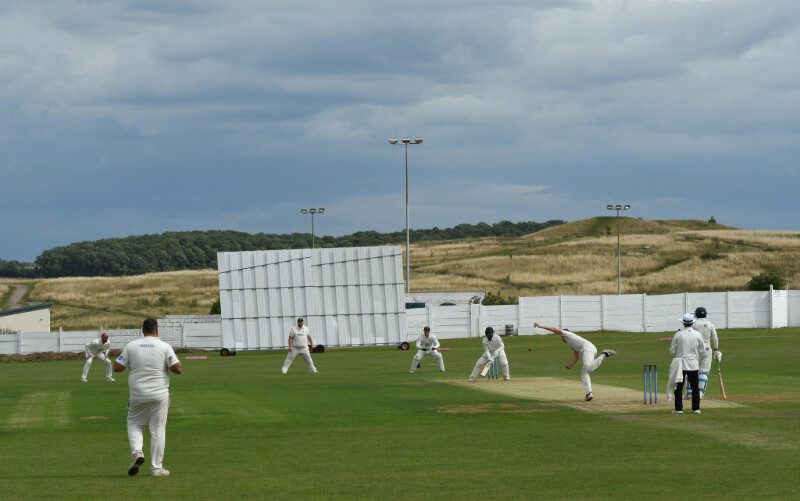
Westfield Lane is a tidy cricket ground, albeit now hemmed in on each side by new-build houses. I wonder if avaricious (is there any other kind?) property developers are eyeing the cricket and football grounds.
Homes and gardens on the cricket ground’s north side are protected by a pitch-length mesh catch fence rising to something like 30 feet. Even so, Frickley No 11 Kieran Mcintyre managed to clear it with a big six. New tiles, please.
Dominating the ground, from the west end of its rectangular pitch, is a smart, single-storey clubhouse, according to a commemorative plaque opened in 2004.
Interesting montage of photographs, adorning the clubhouse’s bar walls, reflecting the rich history of a cricket club established in 1903, five years before the football club.
I checked out the montage whilst admiring also what looked like a magnificent spread of tea goodies laid on for the players.
Such a shame that tea was still being digested by the time the game was over!
Enjoyed the read?
You can check out other club visits by Andrew in his column, Miles Per Gallon.
Here are all of our club cricket articles, with the latest first.